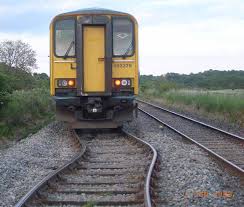Why Rail Joint Gaps Are Crucial to Railway Safety
- thepwayengineer
- Apr 27
- 3 min read
Discover how rail joint gaps prevent buckles and breaks by managing thermal expansion—and why just a few millimetres can derail a train.
How Small Gaps Make a Big Difference
Railway track looks rigid—but it moves constantly. Steel rails expand when heated and contract when cooled. To prevent dangerous forces from building up, engineers rely on a small but critical feature: the joint gap.

Joint gaps are intentional spaces between the rail ends in jointed track. They allow the rails to expand safely in the summer heat and contract during the winter. Without them, rails would buckle or snap.
Understanding Jointed Track
There are two types of rail joints: tight joints (where rails touch) and fishplated or expansion joints (with gaps).
Expansion joints use fishplates and bolts that allow a small degree of movement. These joints are designed not just to connect, but to flex.
Key features include:
Contact surfaces only at the top and bottom of the fishplate.
Oversized bolt holes to allow movement.
The gap between rails, set to the correct dimension.

Joint Closure Temperature (JCT)
The gap at the joint isn’t just random. It’s based on the Joint Closure Temperature. This is the temperature at which the gap should fully closed, meaning zero gap between the rail ends. In the UK, this is set at 38°C.
The calculation for determining the gap is:
Gap = rail length × expansion coefficient × (JCT – installation temp)
Rail engineers can also reverse this to determine the JCT achieved from an existing gap. This is typically done as part of Joint Gap Surveys, which are undertaken prior to the on set of summer and its hot weather. Inspectors will walk sections of jointed track, noting the joint gap measurements, the rail temperature and the rail lengths. From this a JCT for that section of track can be determined.
If the JCT is lower than required, work to adjust the joint gaps needs to be undertaken.
Why is this?
The Risks of Getting It Wrong
Undersized gaps close too early as the rails expand. The rail ends are then tight against each up. When heat continues to expand the rail beyond that point, compressive forces build up as the rail push on each other. Once the level of force reaches a high enough level, it can overcome the restraint provided by other track components (such as the ballast). This leads to the track moving sideways in a bid to release the force, causing a track buckle.
Oversized gaps never fully close during hot weather. However as the rails contract in colder weather, levels of tension increase, which can crack or break fishplates. The joint effectively pulls itself apart.
In 2009, near Cummersdale, Cumbria, a train passed over a buckled section of track and derailed. The investigation report (read it here) calls out insufficient joint gaps as a key factor that led to the buckle and subsequent derailment.
Maintaining Gaps Over Time
Track isn’t static. It is a live system that moves over time, and this can lead to changes in the joint gaps. Maintenance activities, the thermal cycle, movement in the track bed can all lead to shifts in the joint gaps. That’s why railways carry out summer prep every year, including:
Gap surveys and JCT checks
Regulating joints to restore correct gap sizes
Lubricating joints to keep them moving freely
If hot weather arrives before this can be undertaken, mitigations, such as watchman and speed restrictions, will need to be put in place.
These checks keep jointed track safe year-round.
Final Thoughts
The next time you see a tiny gap in the rail, know that it’s doing a massive job. Joint gaps are one of the most overlooked but essential safety features in railway engineering.


Comments